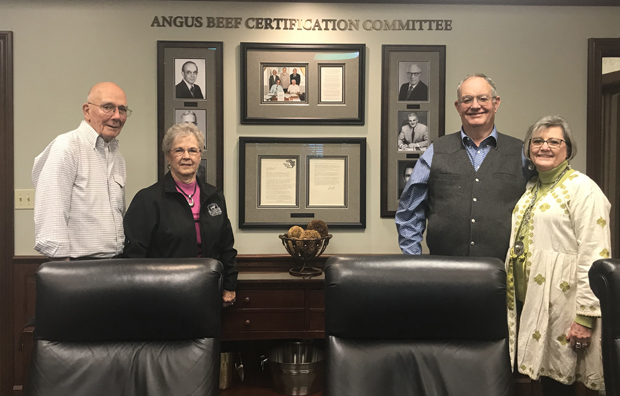Farm & Ranch
Meanwhile back at the ranch

By Rayford Pullen
If you’re ready for 2018 to become a memory, raise your hand. What a wreck for those of us who are at the mercy of the weather and markets to make a living. Being an eternal optimist, I must admit my optimism was wavering a bit at times during the hot dry months of summer, the low price of cull cows and the wettest October on record, but as the clock ticked away the last few seconds of 2018, I couldn’t help but think and hope that 2019 would serve us better, and here’s hoping it does.
I’ve worn out a few pencils the past few months trying to make heads and tails of the cards we’ve been dealt in the cattle business and trying to figure out what we can do to ensure our future financially.
It doesn’t matter if you’re in the commercial or seed stock business, spending less than we are making can be a challenge. My observation is that doing everything we are told is the best for our cow herd, may not always be the best thing for us from a profitability stand point. We can spend ourselves into oblivion doing the “right things” when doing just the necessary things would be sufficient.
Around our place we deworm and vaccinate our calves for blackleg when they are two to three months old, while our cows will receive a vibrio-lepto vaccination at the same time. Is that enough? It just depends on who you talk to or where you are getting your advice on what is essential or not.
Around here, that is about all we believe we need to do, and with calving and weaning percentage around 90 percent or so, we don’t think the extra things recommended by some folks would be cost effective.
To read more pick up a copy of the January 2019 NTFR issue. To subscribe call 940-872-5922.
Farm & Ranch
Hazards of Backyard Poultry

By Barry Whitworth, DVM
Having backyard poultry is a popular agriculture enterprise. According to the United States Department of Agriculture, 0.8 percent of all households in the United States have chickens. People keep chickens for a variety of reasons with table eggs being one of the more common reasons.
Unfortunately, some of these poultry producers are not aware of the hazards that come with keeping poultry because many times they carry pathogens but appear healthy.
Chickens are carriers of several zoonotic diseases. These are diseases that can be passed from animals to humans. According to a recent survey in Pennsylvania, a majority of backyard poultry producers were aware of the dangers of avian influenza. However, this study also revealed that far fewer producers were aware of the risk of possible exposure to Salmonella and Campylobacter.
The lack of knowledge about the hazards of raising poultry likely contributes to the continued issues of Salmonella outbreaks associated with backyard poultry. In 2023, the Centers for Disease Control and Prevention reported 1,072 illnesses of Salmonella linked to backyard poultry, and 272 of those patients required hospitalization. Oklahoma reported 43 individuals with the disease.
To read more, pick up a copy of the April issue of NTFR magazine. To subscribe by mail, call 940-872-5922.
Farm & Ranch
Ag Elsewhere: Wyoming

By Tressa Lawrence
Babies are tucked away in every nook and cranny. Many ranchers across Wyoming have baby animals popping up all over this time of year.
Farm & Ranch
Ag Elsewhere: Montana

By Lindsey Monk
Another load of grain in to keep feeding the calves until the green grass can really start popping.
-

 Country Lifestyles1 year ago
Country Lifestyles1 year agoScott & Stacey Schumacher: A Growth Mindset
-

 Equine7 months ago
Equine7 months agoThe Will to Win
-

 Country Lifestyles7 years ago
Country Lifestyles7 years agoStyle Your Profile – What your style cowboy hat says about you and new trends in 2017
-

 Country Lifestyles4 years ago
Country Lifestyles4 years agoAmber Crawford, Breakaway Roper
-

 HOME7 years ago
HOME7 years agoGrazing North Texas – Wilman Lovegrass
-

 Country Lifestyles7 years ago
Country Lifestyles7 years agoDecember 2016 Profile, Rusty Riddle – The Riddle Way
-

 Country Lifestyles8 years ago
Country Lifestyles8 years agoJune 2016 Profile – The man behind the mic: Bob Tallman
-

 Outdoor9 years ago
Outdoor9 years agoButtercup or Primrose?






